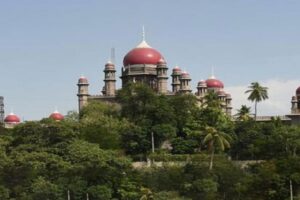
The Manipur High Court, in response to a review petition hearing, has ordered the deletion of a paragraph from a March 2023 order. This paragraph, which urged the state to consider including the Meitei community in the Scheduled Tribe ST) list, was deemed in conflict with the stance of the Supreme Court’s constitution bench.
A single bench of Justice Golmei Gaiphulshillu rescinded the March 27, 2023 directive, believed to have incited ethnic unrest resulting in over 200 fatalities. The contentious paragraph, instructing the state to expedite consideration of Meitei community inclusion, was slated for deletion.
The bench emphasized the necessity of removing the directive, citing the stipulated procedure outlined by the Government of India for amendments to the Scheduled Tribe list. The court’s detailed 19-page verdict underlined the need for alignment with the Supreme Court’s constitutional interpretation, as detailed in the Ministry of Tribal Affairs’ 2013-14 report.
The high court underscored the legislative limitations on judicial interference regarding Scheduled Tribe classifications, referencing a constitution bench ruling from November 2000. This ruling emphasized that courts should refrain from overstepping their jurisdiction in such matters.
Following the eruption of violence subsequent to the March 27 order, several petitions challenging the high court directive were presented to the Supreme Court. On May 17 of the same year, the apex court denounced the high court’s directive as “obnoxious” and considered staying the order due to perceived inaccuracies.
The Supreme Court bench, led by Chief Justice D Y Chandrachud, asserted that the high court’s order was incorrect and indicated a necessity to stay it. However, the Supreme Court refrained from addressing the core legal aspects arising from the Manipur High Court’s decision, as challenges were pending before a larger division bench.
Amidst the legal discourse, the Supreme Court invited tribal participation, particularly from Kukis, in the ongoing legal proceedings related to the intra-court appeals.
The violent unrest in Manipur, triggered by dissent over the Meitei community’s aspiration for Scheduled Tribe status, underscores the complex demographic fabric of the region. Meiteis constitute about 53 per cent of Manipur’s population, predominantly residing in the Imphal Valley, while tribals, including Nagas and Kukis, make up 40 per cent, primarily residing in the hill districts.
The Manipur High Court’s decision to delete the paragraph from its March 2023 order has elicited contrasting reactions from the two warring communities in the northeastern state.
While Meitei organizations have expressed determination to continue their movement for ST status, Kuki bodies have welcomed the verdict, considering it the right decision.
Keithelakpam Bhogen, the general secretary of the Scheduled Tribe Demand Committee Manipur (STDCM), expressed determination to persist in their efforts for ST status for the Meitei community, emphasizing that the issue extends beyond the judiciary and vowing to engage with legislators.
World Meitei Council president Heigrujam Nabashyam downplayed the significance of the directive, stating that their demand for ST status would persist, unaffected by the court’s decision.
On the other hand, the Zomi Council Steering Committee convener welcomed the high court’s decision, considering it the right course of action.
ITLF media spokesperson Ginza Vualzong criticized the Meitei community’s demand for ST status, characterizing it as absurd and driven by ulterior motives such as land acquisition of tribals. Vualzong argued that the Meiteis, being an advanced group with their language recognized in the Constitution, should not seek ST status.




